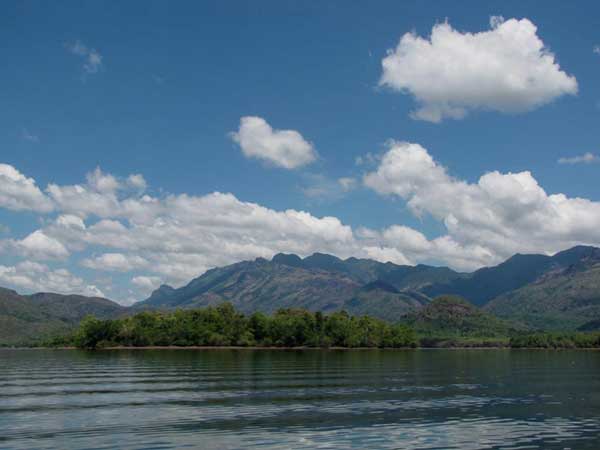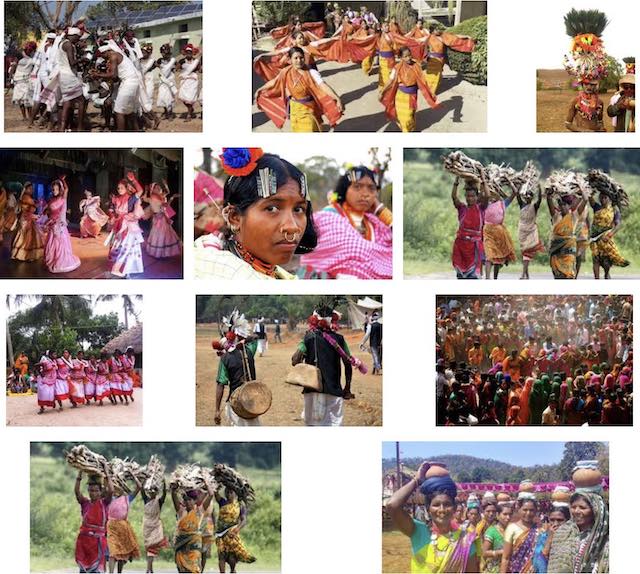
Photo courtesy Davidson Sargunam >>
India may be the only large country with huge scientific capability to lack a serious programme to monitor the state of its ecosystems. Because the major drivers of habitat loss or change are rooted in political, economic and social factors, India needs to develop a monitoring programme that is focused not only on biodiversity, but also on interactions between nature and society, and how such interactions are changing over time. Such a programme that I believe is now being considered by the Ministry of Environment and Forests could be unique in the world, and should allow us to not only monitor change, but also combat biodiversity losses.
We also have to get rid of the mistaken notion that complex natural ecosystems, once destroyed at one place can be easily created elsewhere. Such a notion is evident in government’s compensatory afforestation programmes that implicitly assume first that natural ecosystems such as forests can often be created de novo. Policy makers need to distinguish between a stand of trees and a natural forest with diversity of species, and a myriad of ecological interactions and processes, evolved over millions of years. […]
Partnerships for sustaining life
In a country with more than one billion people and aspirations of an annual economic growth rate of 9 – 10 per cent, how do we conserve biodiversity? Biodiversity is threatened not only by demographic and development pressures, but also by climate change. All these pressures are likely to intensify in the immediate future.
Our approach to conservation has been largely based on the paradigm of creating national parks, tiger reserves, wildlife sanctuaries and other protected areas managed by the State. This approach, borrowed from the West, has several flaws. First and foremost, people, particularly indigenous or tribal groups that number in millions live inside or at the periphery of protected areas, and rely on biodiversity for sustaining their livelihoods. Such people have been largely disenfranchised and have no role in management. In fact, in many cases, centralised management of biodiversity has created conflicts between people and managers of protected areas. These conflicts have endangered rather than enhanced conservation. […]
Overall, India is blessed with unique and an enormous amount of biodiversity that sustains many of our economic endeavours, and provides aesthetic, cultural and spiritual values. This biodiversity is declining, and this decline is threatening our survival. As a country that seeks to be a global power, we have a special responsibility to document, monitor and conserve our most precious asset. Meeting this responsibility will entail a fundamental shift in the ways we describe, assess changes, and conserve biodiversity.
Kamaljit S. Bawa (kamal.bawa@umb.edu) is president of the Bangalore-based Ashoka Trust for Research in Ecology and the Environment; Distinguished Professor of Biology at the University of Massachusetts, Boston, and Giorgio Ruffolo Fellow in Sustainability Science at Harvard University. His book, Conservation Biology: A Primer for South Asia, with Richard Primack and Meera Oommen as co-authors, will be published by the Universities Press.
This article is reproduced from the Survey of the Environment, 2010 published by The Hindu. The publication is now on stands. Copies can be obtained by Registered Post (not V.P.P.) for Rs.80 (Rupees Eighty) by drawing a cheque in favour of “Kasturi and Sons Ltd.” (Add Rs.10 for non-Chennai cheques) and sending it to the Circulation Department, The Hindu, 859-860, Anna Salai, Chennai 600002 Email: subs@thehindu.co.in
Source: Kamaljit S. Bawa in “Our biodiversity, our life, our future” (The Hindu, Sci-Tech / Energy & Environment, 2 August 2010)
Address : https://www.thehindu.com/sci-tech/energy-and-environment/article547960.ece
Date Visited: 11 July 2020
[Bold typeface added above for emphasis]
Up-to-date reports by Indian experts and journalists
Search tips
Combine the name of any particular state, language or region with that of any tribal (Adivasi) community.
Add keywords of special interest (music, poetry, dance just as health, sacred grove and biodiversity); learn about the rights of Scheduled Tribes such as the “Forest Rights Act” (FRA); and the United Nations “Declaration on the Rights of Indigenous Peoples”, “Universal Declaration of Human Rights”, “women’s rights”, or “children’s right to education”.
Ask a question that includes “tribal” or “Adivasi”, for instance: “Adivasi way of life better?” (or “tribal way of life worse?”)
Specify any particular issue or news item (biodiversity, bonded labour and human trafficking, climate change, ecology, economic development, ethnobotany, ethnomedicine, global warming, hunter-gatherers in a particular region or state, prevention of rural poverty, water access).
For official figures include “scheduled tribe ST” along with a union state or region: e.g. “Chhattisgarh ST community”, “Himalayan tribe”, “Scheduled tribe Tamil Nadu census”, “ST Kerala census”, “Particularly Vulnerable Tribal Group Jharkhand”, “PVTG Rajasthan”, “Adivasi ST Kerala”, “Adibasi ST West Bengal” etc.
In case the Google Custom Search window is not displayed here try the following: (1) toggle between “Reader” and regular viewing; (2) in your browser’s Security settings select “Enable JavaScript” | More tips >>
Note: hyperlinks and quotes are meant for fact-checking and information purposes only | Disclaimer >>
List of websites covered by this Google custom search engine
Academia.edu (platform for academics to share research papers) – www.academia.edu
Archive.org – https://archive.org
Centre for Science and Environment – https://www.cseindia.org
Current Conservation – https://www.currentconservation.org
Development and Cooperation (D+C) https://www.dandc.eu
Down To Earth (India) – www.downtoearth.org.in
India Environment Portal – www.indiaenvironmentportal.org.in
Harnessing Nature Magazine – https://harnessingnature.online
Mongabay-India – https://india.mongabay.com
M S Swaminathan Research Foundation – www.mssrf.org
Navdanya (protecting India’s biodiversity based food heritage) – https://navdanya.org
Third World Network (Penang, Malaysia) – https://twn.my
The Shola Trust (nature conservation in the Nilgiri region) – www.thesholatrust.org

Indian online periodicals and platforms | Images view >>
~ ~ ~
Personalize your CustomSearch by combining other search words >>
(e.g. name of a tribal community and region, a craft, or dance and puppetry)
Research the above issues with the help of Shodhganga: A reservoir of theses from universities all over India, made available under Open Access >>
Note: hyperlinks and quotes are meant for fact-checking and information purposes only | Disclaimer >>

Tribal Literature by G.N. Devy >>
Free eBooks & Magazine: Adivasi literature and languages >>
“India, a union of states, is a Sovereign, Secular, Democratic Republic with a Parliamentary system of Government. The President is the constitutional head of Executive of the Union. In the states, the Governor, as the representative of the President, is the head of Executive. The system of government in states closely resembles that of the Union. There are 28 states and 8 Union territories in the country. Union Territories are administered by the President through an Administrator appointed by him/her. From the largest to the smallest, each State/UT of India has a unique demography, history and culture, dress, festivals, language etc. This section introduces you to the various States/UTs in the Country and urges you to explore their magnificent uniqueness…” – KnowIndia (Government), States and Union Territories (Visited: 2 September 2023)
Learn more about India’s 28 States and 8 Union Territories – From Andhra Pradesh to West Bengal | Nutrition >>
To peruse related documents published by government agencies and NGOs, click here >>
See also
Accordweb.in | Accord | Articles by co-founder Mari Marcel Thekaekara | Shola Trust
Atree.org | Ashoka Trust for Research in Ecology & the Environment (posts)
Climate change | Audio | The Climate Question (BBC Podcast)
Environmental history and what makes for a civilization – Romila Thapar
Equations blog (Equitable Tourism Options)
Information provided by Indian government agencies and other organizations (FAQ)
Nature and wildlife | Crocodile | Elephant | Tiger | Mangrove forest | Trees
PARI’s tales from tiger territory | People’s Archive of Rural India (PARI)
United Nations on climate change
What is the Forest Rights Act about?
Who is a forest dweller under this law, and who gets rights?